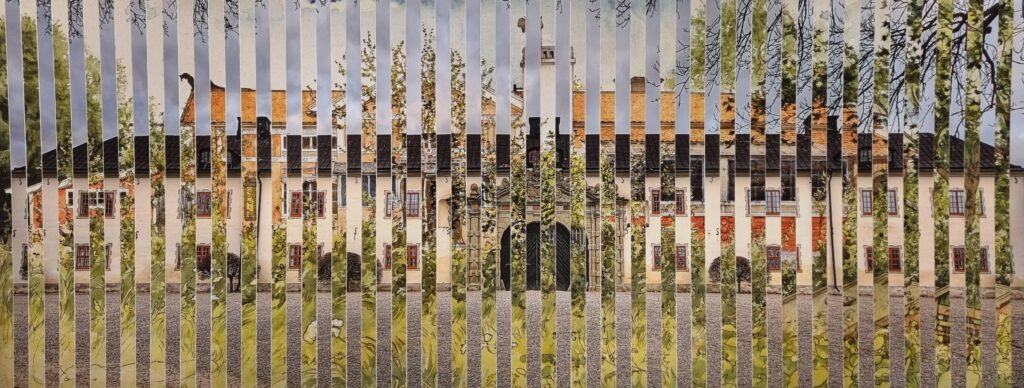
My practice and research interests lie in studying and creating representations of “Swedishness” and “foreignness”. The immediate context of my work is the “paradigm shift in migration politics” set in motion through the Tidö Agreement, 14 October 2022, and in effect at least till 2026.
The radical investigation that my work carries out is the probe into how the Tidö Agreement not only adversely affects the foreigner – my work enquires into how it infects the Swede themselves and their “Swedishness” too.
The most extensive component of the Tidö Agreement is the section on Migration and Integration in which a markedly prohibitive and punitive approach is clearly stated. Therefore, at first glance, the Agreement gives the impression that its policy proposals have an exclusive impact on foreigners in Sweden due to the high visibility of hard-line efforts to reduce migration as well as displace those who are already in the country. However, the commitment I am making in my enquiry is to disclose the impact that right-wing political rhetoric and policies have on migrants and their families, as well as the very thing that they allegedly try to protect: Sweden, the Swede, and Swedishness itself.
As a first-generation Southeast Asian immigrant and Swedish permanent resident, my series of collages explore iconographies that speak to the rising socio-political tensions concerning migration and asylum-seeking through the study of the notions of vision, visibility and visuality. As method of political critique, I employ collages as an ironic means of pointing back to the role of the artist as constructor, fabricator and manipulator of extant signs and signifiers.
This series of collages juxtaposes press images from 2022-2023 with the paintings of Swedish National Romantic painter, Carl Larsson (1853-1919), focussing on a specific genre of his painting, the domestic interior. By “interior” I mean the following: a) the physical space of the home in which one lives and sleeps, and b) the mental space in the imagination in which citizens conjure mental images of what home is. Drawing from Benedict Anderson’s concept of “imagined communities” in relation to what a nation is, an integral part of my research and practice has been to enquire into how the Swedish public imagination of “home” and “Swedishness” has been shaped by the iconography of Carl Larsson’s paintings.
The collages individually use two or three pictorial icons in the attempt to make a single, pointed statement within the piece. But taken together, I aim for the series as a whole to present a controlled collision of textual and visual iconographies that articulate socio-political rifts. Potentially incendiary political discussions are facilitated and mediated through a consciously calibrated balance of humour and sobriety. In a spirit akin to the literary genre of satire, I intend for the element of humour to disarm in the face of conflict, while the element of sobriety is intended to confront the harsh realities of increasingly hostile and extremist manifestations of right-wing nationalism.